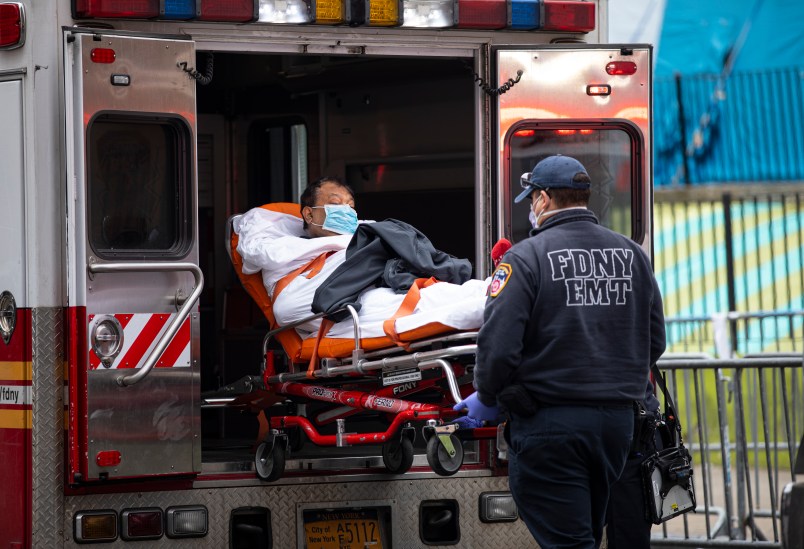Deaths at home and on the street soared in New York City as the city began to grapple with the COVID pandemic, newly released data from the city’s Fire Department show.
The data show that starting on March 16, the fire department began to experience a huge surge in so-called “cardiac calls,” which fire officials see as a sign of the “stark” change due to the pandemic.
“A year ago – same time frame – we were seeing an average of 54-74 cardiac arrest calls per day, with 22-32 deaths,” the Fire Department said in a statement. “Now, in this pandemic, we are seeing more than 300 cardiac arrest calls each day, with well over 200 people dying each day.”
Data: FDNY
FDNY spokesman Frank Dwyer explained that medical dispatchers or first responders at the scene determine whether a patient is in cardiac arrest – a catch-all for patients whose hearts have stopped beating. He added that the number likely includes “suspected or positive COVID patients among those calls.”
The spike in the fire department’s numbers suggests that New York City is vastly undercounting the number of people who have died of COVID-19, the disease caused by the novel coronavirus that has spread throughout the world.
As of this writing, 5,820 New Yorkers are listed as having died of COVID, while 92,384 have been diagnosed, according to tracking by Johns Hopkins University.
The FDNY released data to TPM from Jan. 1 to April 5, showing the amount of so-called “cardiac” calls the Fire Department received, and the proportion of those that resulted in first responders identifying a dead patient.
For comparison, the FNDY provided similar data for the same period in 2019.
Data: FDNY
The overall number of excess deaths due to COVID remains unknown. That number reflects both people who die of COVID having never been diagnosed, and those who die of otherwise treatable illnesses due to a health care system overloaded by patients stricken by the virus.
The phenomenon appears to be global, however. One study found that in Italy’s virus-stricken northern regions, the overall mortality rate went up by six times – far more than official death tallies due to COVID showed.
Following Hurricane Maria in Puerto Rico, which decimated the island’s health care system, researchers were able to determine excess deaths by analyzing the spike in deaths compared to years prior.
The numbers provided by the FDNY suggest that a similar phenomenon exists in New York City.
The Regional Emergency Medical Services Council of New York – which governs New York City’s ambulances – ordered on March 31 that cardiac arrest calls could only be transported to hospitals if there were still signs of life in the patient.
Data shows that the city saw 254 cardiac calls that day, with 167 deaths – compared to 54 cardiac calls and 22 deaths on the same day in 2019.
Data: FDNY
Charts by Jacob Harris/TPM.
This post has been corrected to reflect the amount by which deaths in Italy reportedly increased during the COVID pandemic.







Sorry, the President can’t be bothered right now, he’s too busy declaring victory.
“Percentage of Calls where Patient Died:” about 75% in the last few days charted.
It’s gotta be tougher and tougher to be a first responder, whether on a firefighting crew or as an EMT or even answering 911 calls. We need to give all possible support to the people who keep trying to do these tasks.
“Meanwhile, on alternate Earth MJ719, in a fairly unremarkable dimension of the multiverse, President Hillary Clinton has just signed legislation increasing the CDC budget, expanding the Pandemic Response Team, and funding free wellness checks for all Americans, following three straight years of US medical-supply growth and another decade of historically-low communicable disease…”
People should stop watching Trump’s daily briefings.
To report the true total number of deaths nationwide this sort of calculation will have to be made city-by-city and state-by-state, because the federal government will push back.